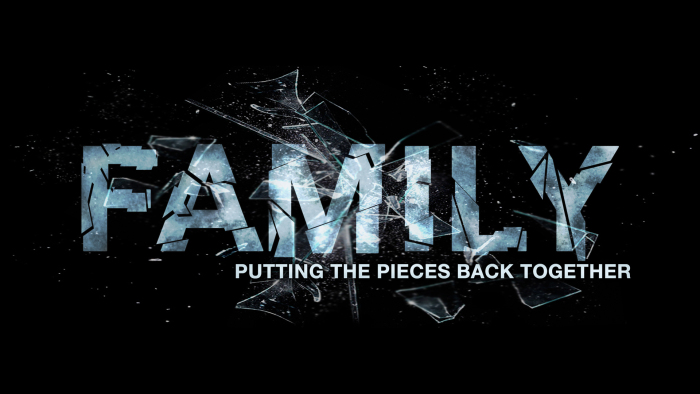
Reconstructing our family after a loss by suicide can feel like an impossible task when you yourself are trying to establish the meaning of such a tragic death. Here in Chicago we are blessed to have The LOSS Program, for survivors of a suicide loss. Cynthia Waderlow, LCSW, is the child therapist for the program, and she recently wrote the following article for the January Obelisk newsletter. As it offers great advice for those trying to reconstruct their families after a loss by suicide, we wanted to republish it here. Whether the loss was a grandparent, parent, sibling, or friend, these are great insights.
Empty Space
After a suicide, surviving parents may look into the rooms of their home and see remnants of a family life that is upside down. There is not only pain, but a pervasive sense of strangeness and stopped time. An initial task of a family’s grief journey requires adjustment to the sense of displacement that touches everything. A teen told the story of a washing machine that was delivered on the day that his father died. (Silverman and Kelly, 2009). The washer was going to be installed by his dad. The boy said that after his father’s death it sat in the hallway for months, and every time he looked at it, he wondered how his mother and siblings were going to manage.
This vignette speaks not only to disruption, but to stalled meaning. We don’t think much about our washer as long as it keeps up with the pace of our family’s needs. We count on it because we value our readiness to face the demands of our dynamic lives. But when a loved one dies by suicide, we may feel too stunned to recall the meaning of the routines and activities, the tools that facilitated our lives and filled our days with a sense of purpose and accomplishment. The immediate aftermath of suicide includes the bewildering puzzle of time and meaning. What to do with it?
Another example is the dinner table. Children in grief sessions have been known to draw the empty chair that was left behind by the deceased loved one. The silence of this space at the table speaks loudly of disruption. In response, we can rotate our seats until we have integrated the absence, even if intentional seat changing feels strange. But we find ourselves making odd adjustments as a rational response to the numbing void of loss and the unresolved state of our new lives.
Our bereaved children’s grief processes are unpredictable. They have lost their innocence about the permanence of relationships. Their grief concerns not only loss of a parent, but troubling questions about suicide and possible death anxiety. And their grief is a little different at each developmental stage, but still does not conform to any patterns we can anticipate. A teen may want privacy around her grief, then later feel critical of you for not having spoken of her deceased father in a while. School aged children may try to avoid painful feelings with constant use of video games or sports, but is their agenda to sideline their grief so that they can keep an eye on your emotional stability? Younger ones may verbalize little about the loss, but react with a tantrum when it is time to turn off the TV. We learn that their little losses are really about this one life changing loss. It stays just beneath the surface.
The absurd quality of lives that have been changed by the seemingly irrational act of our loved one may lead us to view details that previously structured our lives as burdensome and meaningless. We now eat fast food instead of preparing dinner. Our teens seem to find comfort outside of the house, rather than at home. Our rambunctious sons have grown quiet. Since everything feels more difficult, we argue more. We long for closeness with our children, yet feel slightly estranged as we come to grips with the change in all of us. Few of us have coping skills for profoundly changed reality. Does it help if we talk about its strangeness?
I think it can be helpful to acknowledge how different much of life is after loss as long as our children don’t get the message that they are responsible for our confusion. The identification of how different life feels now can be grounding. We must anticipate confusion and disorientation as part of the grief process in order to feel normal and to console ourselves and our children. If we can talk about the dissolution of life as we knew it, and offer an intention to rebuild together, we shift intentionally toward cohesion and solidarity.
Self-help literature for recovering addicts and co-dependent adults espouses the need for structure and order in personal spaces as a requisite for healing. Personal space, not the whole house, is the reasonable, essential way to begin responsibility for our own well-being and growing awareness after a chaotic experience. I remember a judge directing one of my youth clients who had recently gotten into trouble that he must make his bed each morning, a minor, repeated task that became a metaphor for the new day and the young man’s role in it. The point is meaning construction: “I am still here. I am slowly picking up one piece at a time of my family’s life.” Each child can contribute in his or her own way. After losing her mom, I observed that a five year old lined up her soft animals to be covered with a blanket each week that she visited me for grief therapy. This was a quietly compelling way of creating order, nurturance and normalcy in the midst of incomprehensible loss. When I acknowledged the child’s wisdom under the circumstances, awareness of her participation in universal acts of order and nurturance became part of her healing.
After we, the surviving caregivers, have begun to ground ourselves with rest, a support system and basic order inside the house, we can focus on the conundrum of our bereaved children’s unique needs within their developmental moment. We will seek information and voice an intention to stay close, even as we all experience and express grief differently. Joe Biden, in his recent TAPS talk about his grief and family life, attested to his reluctant observation that good can grow out of tragic loss. He identified “bonds of steel” that developed between himself and his young sons after the death of his wife and baby daughter. They managed to piece life together even through Biden’s experience of anger and pain. He realized one day that he was going to make it only by noticing that his worst days were occurring farther apart. Reconstruction after loss of a loved one is arduous, focused, dedicated work. For ourselves and our children, disorder and void will be reshaped into meaningful order with remembrance and intention.
Fortunately, LOSS offers services to adults and children of all ages. Fortunately, there is plenty of literature to guide bereaved families through the strange, unfamiliar terrain of grief. As the poet, Rilke, said regarding uncharted emotional terrain, we can “feel (our) way along the wall,” and not give up on constructing a new order, an understanding space for ourselves and each unique child to come to terms with profound loss. We are their witnesses.
Silverman, P.R. and Kelly, M. (2009): A Parent’s Guide to Raising Grieving Children; Rebuilding your Family after the Death of a Loved One. Oxford University Press.
For more information about Catholic Charities, Loving Outreach to Survivors of Suicide (LOSS) click here.




Hello-I’m on your subscribers list but I’m having trouble sharing your articles with friends on FB. Has thios Blog become closed?
You should still be able to share from the Facebook wall when we publish the posts. I’m sorry to hear you’re having difficulty. Facebook sometimes alters their layout, so I hope this isn’t causing a problem.